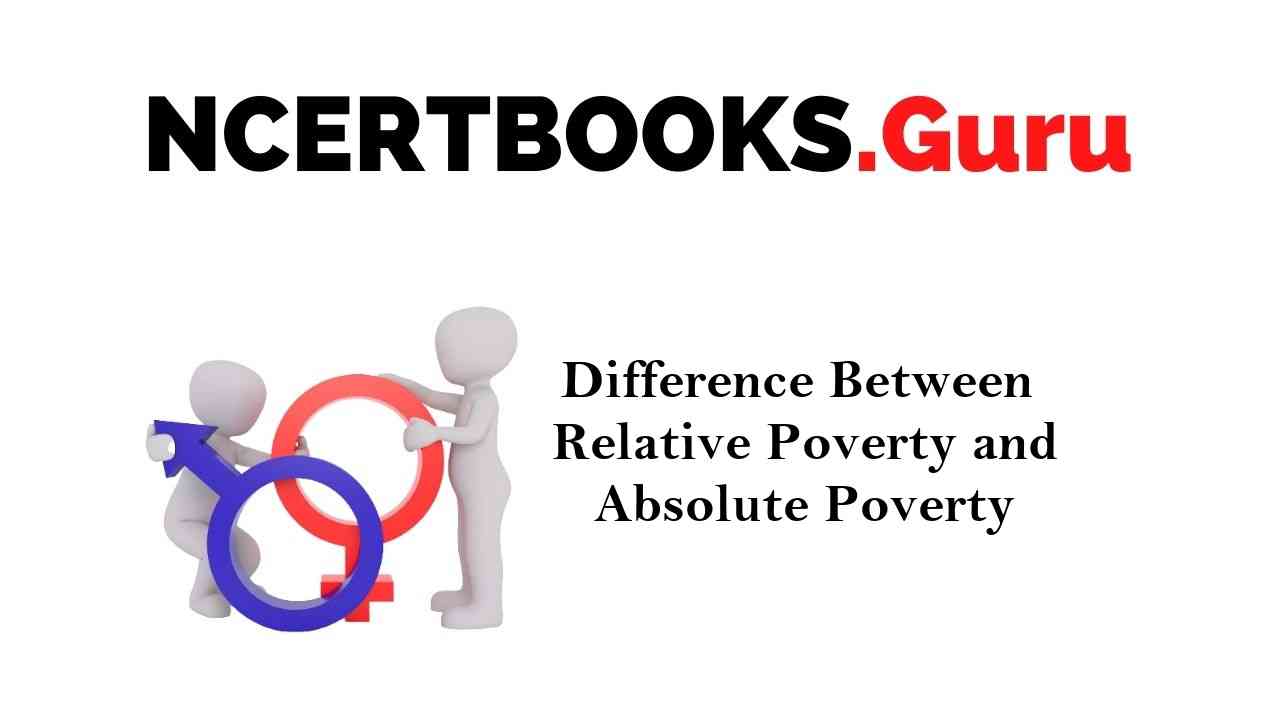Difference Between Relative Poverty and Absolute Poverty: Poverty is considered as a state or condition of a country, where people do not have the minimum financial resources that are required for maintaining a minimum standard of living. In other words, poverty is such a situation in which the income level from employment is so low that it can’t afford the normal needs of a person’s life.
You can also find differences between articles on various topics that you need to know. Just tap on the quick link available and get to know the basic differences between them.
What is the Difference Between Relative Poverty and Absolute Poverty?
People who get hit by poverty face a lot of problems such as no housing, unclean water, starving to eat and no medical attention. Every country has a certain number of people who are under the poverty level.
Poverty is classified into two types which are relative poverty and absolute poverty. Let’s discuss more on this classification:
Relative Poverty
Relative poverty is a situation where the persons who got hit by these earn 50% less than the average income of the households of that area. Thus, it implies that the households have some money, but that is not enough to afford anything that is above the basics. This type of poverty is flexible and changes with the change in the economic growth of a country. Thus, it means that relative poverty depends on the economic growth of the country. Relative poverty is also known as relative deprivation.
Absolute Poverty
Absolute poverty is a situation where the persons who got hit by these earns money under a certain level which is not enough even to buy the basic needs of a person. A person’s basic needs are food, shelter, cloth, safe drinking water, healthcare, and education. A person cant utilize these basic needs if he/she get hit by absolute poverty. This type of poverty doesn’t depend on the economic growth of the country. Even if the economy is growing, people who are under absolute poverty remains there.
Difference Between Relative Poverty and Absolute Poverty
| Relative Poverty | Absolute Poverty |
| Relative poverty does not focus or concentrate on the biological needs of a person but is involved in comparing the incomes of two people living in the same environment. | A person who is not even capable of buying essential needs for him/her comes under this poverty—essential needs such as food, shelter, cloth education, etc. |
| While measuring relative poverty, income level is not considered, which is why a person who is meeting his/her personal needs is also considered poor under this case. | While measuring absolute poverty, the income level of persons is considered. |
| Although people living in relative poverty earn more than people living in absolute poverty they still earn less than others who are living in the same society | Under absolute poverty, the broader quality of life issues is not considered. The overall level of inequality is also not considered here. |
| This poverty is measured using Gini-Coefficient and Lorenzo Curve. | This poverty is measured using the poverty line. |
| There is Little possibility of eradication if this poverty. | There is no possibility of eradication of this poverty. |
| Quality of life is a little better than those who are living in absolute poverty. | Quality of life is poor. |
